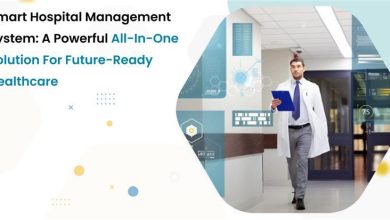In August the news about Japan suspending 1.63 million doses of Moderna vaccine shocked the world community. It was revealed that the vaccine was contaminated with metal particles due to “human error specific to visually misjudging the required 1mm gap between the star-wheel and the stopper” of the machine that put the tops on vials. Correspondingly, this mistake could have posed a threat to the lives of 1.63 million people getting their vaccination.
New inspection methods needed
The pharmaceutical products are getting more complex meaning that inspecting them is getting more complicated as well. This is reaching the limits of what is possible with traditional algorithms or manual visual inspection. The present pandemic situation, in particular, has made the whole global population dependent on the quality of COVID-19 vaccines. And it is a fact that biotech products are even more sensitive than other chemicals which also results in a more sophisticated packaging.
As data collection techniques become more efficient and widely available, many pharmaceutical companies are starting to consider Artificial Intelligence (AI) for improving their drug and vaccine inspections. Machine Learning (ML), a subsection of AI, takes advantage of this improved data collection to create algorithms that can detect defects in real time with human-level accuracy. For this purpose, ML engineers use supervised and unsupervised algorithms. Unsupervised algorithms enable detecting very rare things such as mixed-up products whereas supervised ones identify small objects like foreign body particles, pieces of glass or metal, hairs etc.
Current inspection approaches: why AI is better
At the moment pharmaceutical companies do drug and vaccine inspections using two approaches: manual visual inspection by human operators and classic Computer Vision (CV) algorithms. The reason why AI algorithms should be considered instead of manual inspection is that they eliminate the chance of human error, thus providing more consistent and accurate results. At the same time, since using these types of algorithms reduces the number of workers involved in inspection, the remaining workers can focus on other tasks which also secures labour costs for the company.
In comparison to classic algorithms, ML algorithms represent a more advanced inspection technology. They are not programmed beforehand to do a task but rather learn how to do that task themselves, by analysing their own performance and learning from mistakes. However, once the algorithm gets the best metrics possible, ML engineers can freeze it to reach the quality goals.
In addition, classic algorithms are often not feasible for an environment which is in constant change. They employ a more rigorous mathematical approach, whereas ML algorithms can be applied to any situation where there is available data and are therefore more suitable for visual inspections. AI algorithms process data in raw form which, in the case of drug inspection, includes images.
Corporate innovation: easier said than done
Interestingly, the number of companies actually implementing AI in inspections is drastically smaller than of those willing to apply it. This is often explained by the absence of teams with cross functional skills at a corporate workplace. For creating a well-functioning AI process, it is necessary to have a team with people possessing both the knowledge of IT development and machine learning science as well as quality inspection and pharmaceutical regulations, for instance. This frequently poses a problem in the corporate environment where every individual or even department has a very specific set of skills.
Consequently, the solution cannot be implemented without consulting with the whole corporation. Normally, in this case the company needs to build an entire innovation department from scratch with the people of relevant skills which often takes from 3 to 5 years. They also require material to work with. Therefore, companies also need to invest in the development of special hardware such as robots, cameras, servers, and screens for the interface to interact with robots or robotic arms.
This is why tech companies that provide AI for drug inspections emerge. It is true that the teams of small companies are much more multifunctional simply because their size forces them to be so. Despite all the bureaucratic drawbacks, tech innovators do set up pilot projects with pharma giants to demonstrate how easy it is to implement AI. This often simplifies the change management process at the corporation because they can co-work with a team of a small company that already has a solution for them and can help them with introducing it at the workplace. As a result of such cooperation, pharma manufacturers endure less false rejects, deviations and recalls.
Challenges on hand
Currently, these tech companies face two main challenges. The first one is improving the algorithms to reach 100% accuracy. It is proved that the visual inspections with AI reach up to a 90% precision which demonstrates some room for improvement. The second challenge is overcoming the barriers to entry in the pharmaceutical environment. All the new technologies need to comply with FDA and Eudralex regulations to be used in the pharmaceutical environment.
Eudralex Volume 4 Annex 11: Computerised systems provides a perfect example. According to this directive, the manufacturer of the medical device which is going to be implemented in the pharmaceutical industry must guarantee proper validation, electronic archiving and signatures, risk management and security. Only this regulation alone requires an extra effort from AI developers while they also need to ensure a high-level of security considering the confidentiality of corporate data and regularly validate the computer system. Considering that the AI algorithms are a “blackbox” by essence, validating and controlling all the process steps might be sometimes challenging.
Postponing change has fatal consequences
The pandemic has clearly demonstrated the necessity for a balance between having strict regulations and proper change management in pharmaceutical companies. Even with all the pressure and time constraints, it took more than 1.5 years for the most advanced enterprises in the field to actually start the mass production of COVID-19 vaccines. This is clear evidence of pharma manufacturers lacking flexibility.
The innovative approaches for drug manufacturing like AI, for example, have previously been neglected. Most pharmaceutical companies put “extending human lives” and “improving the quality of global healthcare” in their mission statements. This, of course, explains why there are so many standards and procedures in place: pharmaceutical companies cannot risk the life of patients. However, at the state of emergency, when the destiny of the whole global population is at stake, it is the duty of these companies to deliver a result as soon as possible at any cost and measure especially when the innovative solutions are here for them to use. Refraining from doing so simply contradicts their corporate values.
Finding the right AI solution
And now the main question comes: how to find the provider of the best AI service for a pharma business? Since the concept of visual inspection with AI is very new, this is exactly startups that are working on the development of the relevant algorithms. It is, therefore, recommended to look for those startups that have references from pharmaceutical companies. Usually, the young companies working in this area do not have the legacy of developing other solutions. This means that the firms use their tech solution in full capacity: working on and improving exactly the few most important features for drug inspection instead of taking other use cases.


